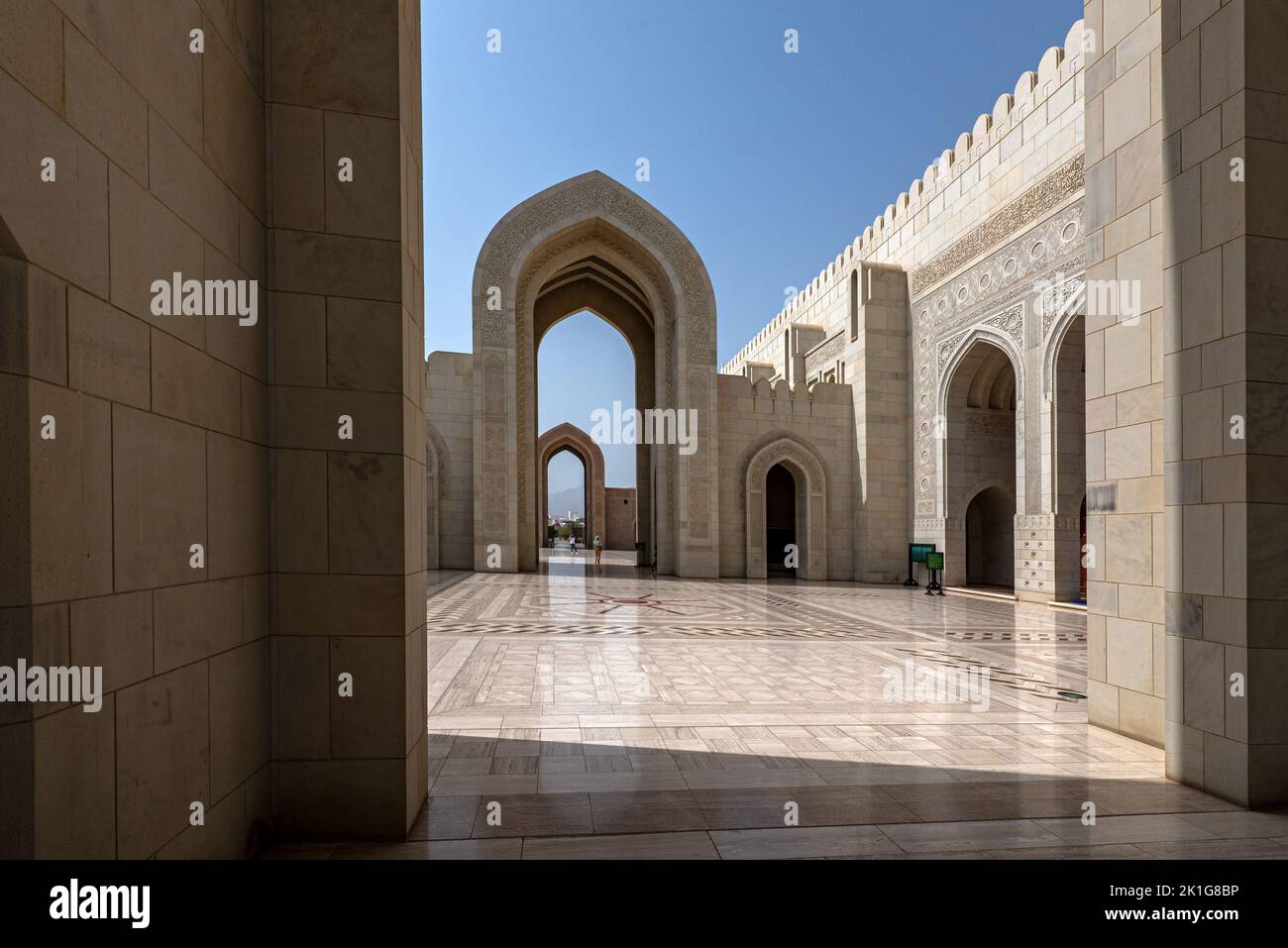Sultan Qaboos Grand Mosque, Muscat, Oman

Image details
Contributor:
Roberto Cornacchia / Alamy Stock PhotoImage ID:
2K1G8BPFile size:
69.1 MB (2.8 MB Compressed download)Releases:
Model - no | Property - noDo I need a release?Dimensions:
6016 x 4016 px | 50.9 x 34 cm | 20.1 x 13.4 inches | 300dpiDate taken:
18 April 2022Location:
Muscat, OmanMore information:
The Sultan Qaboos Grand Mosque is the largest mosque in Oman, located in the capital city of Muscat. In 1992, Qaboos bin Said al Said, the then Sultan of Oman, directed that his country should have a Grand Mosque. A competition for its design took place in 1993 and after a site was chosen at Bausher construction commenced in December 1994. Building work, which was undertaken by Carillion Alawi LLC, took six years and seven months. The mosque is built from 300, 000 tonnes of Indian sandstone. The main musalla or prayer hall is square and 74.4 by 74.4 metres (244 by 244 feet) with a central dome rising to a height of 50 metres (160 ft) above the floor.[4] The dome and the main minaret (90 metres (300 ft)) and four flanking minarets (45.5 metres (149 ft)) are the mosque’s chief visual features. The main musalla can hold over 6500 worshippers, while the women's musalla can accommodate 750 worshipers. The outer paved ground can hold 8000 worshipers and there is additional space available in the interior courtyard and the passageways, making a total capacity of up to 20, 000 worshipers. The mosque is built on a site occupying 416, 000 m2 (4, 480, 000 sq ft), and the complex extends to cover an area of 40, 000 m2 (430, 000 sq ft). The newly built Grand Mosque was inaugurated by Sultan of Oman on May 4, 2001 to celebrate 30 years of his reign. A major feature of the design of the interior is the prayer carpet which covers the floor of the prayer hall. It contains, 1, 700, 000, 000 knots, weighs 21 tonnes and took four years to produce, and brings together the classical Persian Tabriz, Kashan and Isfahan design traditions. 28 colors in varying shades were used, the majority obtained from traditional vegetable dyes. It used to be the largest single-piece carpet in the world, but is now the second, after the Sheikh Zayed Mosque in Abu Dhabi, the UAE. This hand-woven carpet was produced by Iran Carpet Company (ICC) at the order of the Diwan of the Royal Court of Sultanate.